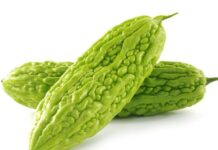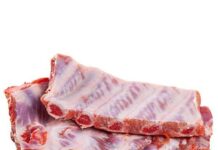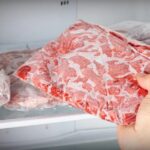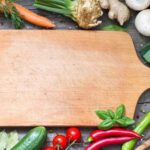1. Using the Same Cutting Board and Knife for Raw and Cooked Meat
It is a common mistake for many homemakers to use the same knife and cutting board for raw and cooked meat. This inadvertently causes bacteria from the raw meat to cling to the surface of the cutting board and transfer to the cooked meat, leading to various health issues when consumed.
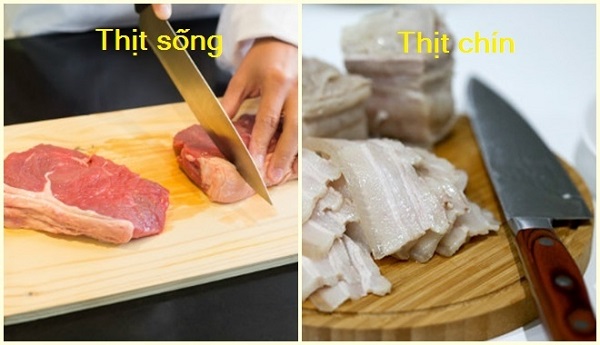
It is advisable to use separate cutting boards for raw and cooked meat. If possible, consider using an additional cutting board for fruits and vegetables, and replace your cutting boards as recommended, typically every 3-6 months or when they show signs of wear and tear.
2. Using Old and Worn Wooden Cutting Boards
According to the United States Department of Agriculture, wooden cutting boards are the best choice for chopping and slicing meat. However, an old and worn wooden cutting board can harbor bacteria.
It is advisable to replace old and worn wooden cutting boards. Remember to always use separate cutting boards for raw and cooked foods.
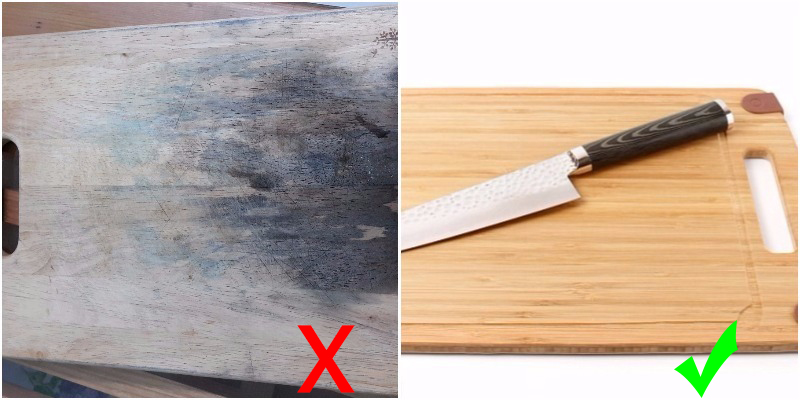
3. Cooking Meat Without Proper Thawing
When meat is not properly thawed before cooking, the outer part cooks faster than the inner portion, resulting in uneven cooking. Therefore, it is recommended to thaw meat for about an hour before cooking to ensure even cooking.
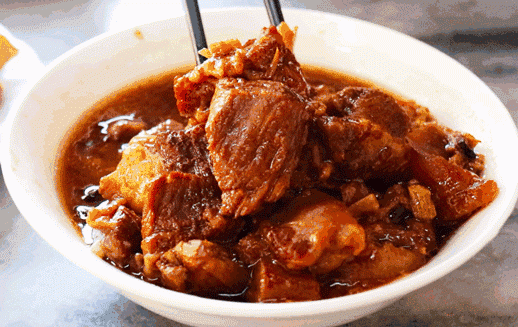
Avoid thawing meat at room temperature as it can promote bacterial growth, leading to food poisoning and diarrhea. Do not place frozen meat directly into hot oil for thawing or cooking, as this can result in nutrient loss. Overcooking frozen meat can lead to a loss of texture, taste, and nutritional value.
Always cook thawed meat immediately and avoid refreezing. It is recommended to use a microwave oven for efficient thawing at the appropriate temperature. Seal the meat tightly in plastic wrap to retain moisture and nutrients. Alternatively, you can place the meat in a closed container and let it thaw gradually in the refrigerator. Avoid using hot water for thawing, as it can damage the meat and promote bacterial growth.
4. Improper Thawing Techniques
Busy individuals often shop for groceries for the entire week, requiring them to store meat in the freezer. Each time meat is taken out for cooking, it needs to be thawed properly.
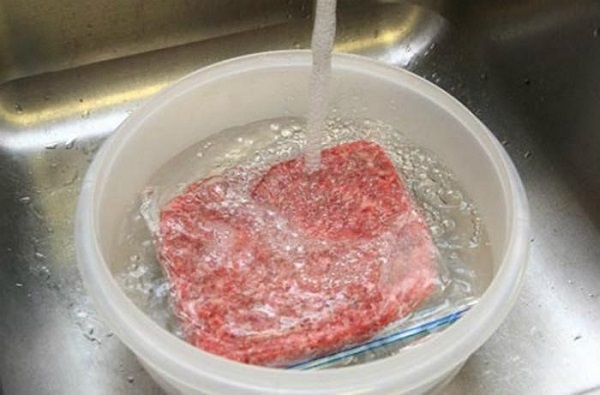
According to experts, the ideal thawing time is around 2-3 hours. Avoid using boiling water or soaking meat in cold water for extended periods, as this can lead to nutrient loss. The most effective method is to use cold water with a small amount of salt or fresh crushed ginger. Ginger helps restore the freshness and flavor of the meat.
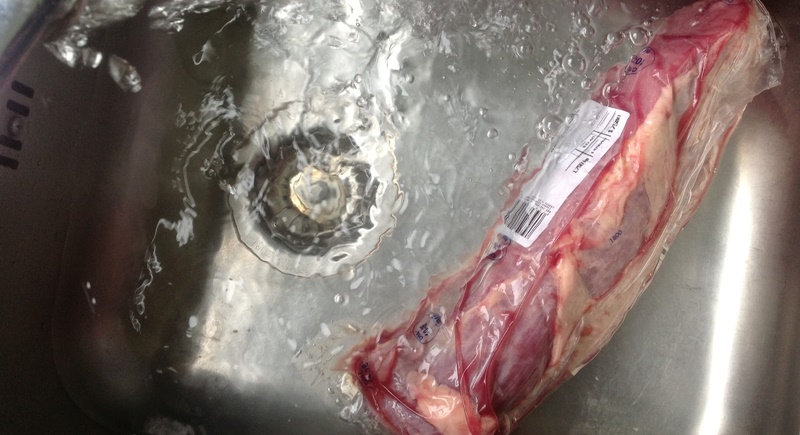
Here are some specific guidelines to follow:
– Soaking meat in cold water for too long, using hot water, or placing it near a high heat source for rapid thawing are incorrect practices that should be avoided.
– Soaking meat in cold water for more than 3 hours will result in nutrient loss and a decrease in flavor and texture.
– Placing meat near a high heat source or using hot water for thawing creates an ideal environment for bacterial growth and meat deterioration.
The correct way to thaw meat is to submerge it in cold water with a small amount of salt or crushed ginger for 2-3 hours. This method will effectively soften the meat while preserving its freshness and flavor.
– Alternatively, you can transfer the meat from the freezer to the refrigerator and allow it to thaw gradually overnight.
5. Storing Meat in the Refrigerator for an Extended Period
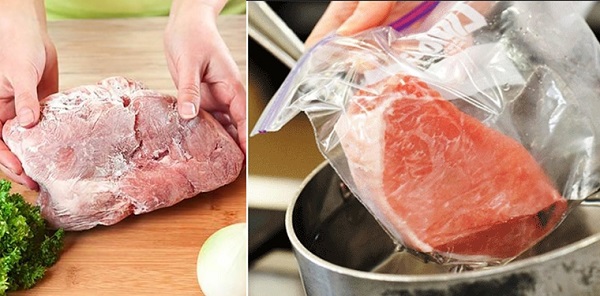
Health experts from the United States Department of Agriculture advise against keeping meat and seafood in the refrigerator for more than two days, as it can lead to hardening and nutrient loss. Additionally, storing meat in the refrigerator for extended periods without freezing can promote the growth of harmful bacteria.
The recommended storage times are as follows:
– Cooked meat can be stored in the refrigerator for up to 5 days. However, to ensure maximum freshness and nutritional value, it is advisable to purchase only the amount of meat required for a single meal.
– If you buy in bulk, it is recommended to package the meat properly and store it in the freezer.
6. Blanching Pork Without Prior Washing
Some individuals believe that blanching meat can eliminate bacteria. However, according to Dr. Hoang Thi Thuy Ha from the Institute of Clinical Nutrition, unwashed meat that is blanched will cause the muscle fibers to contract, trapping more bacteria and impurities.
It is advisable to wash the meat with salt and rinse it thoroughly with water multiple times before cooking.
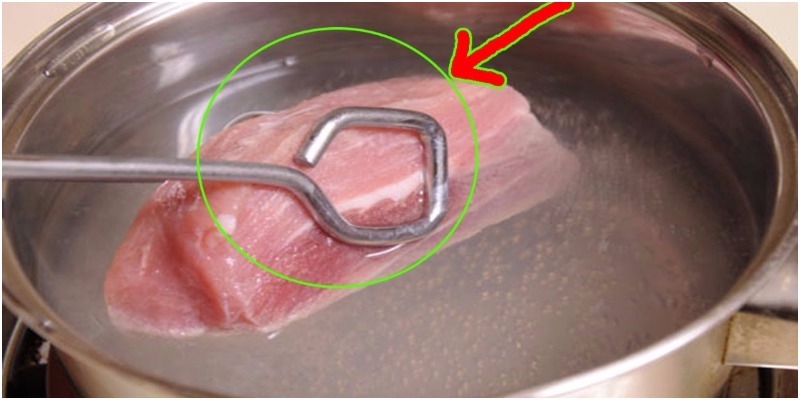
Avoid blanching meat in boiling water. According to experts, the primary nutrient in meat, including pork, is protein. These proteins exist in the form of muscle fibers and fat. When meat is suddenly immersed in boiling water, the protein molecules clump together while the outer layer of the meat hardens.
7. Overcooking Pork
There is a common belief that the softer the meat, the better it tastes. As a result, many people tend to overcook meat, especially when simmering bones, to the extent that even the bones become soft.
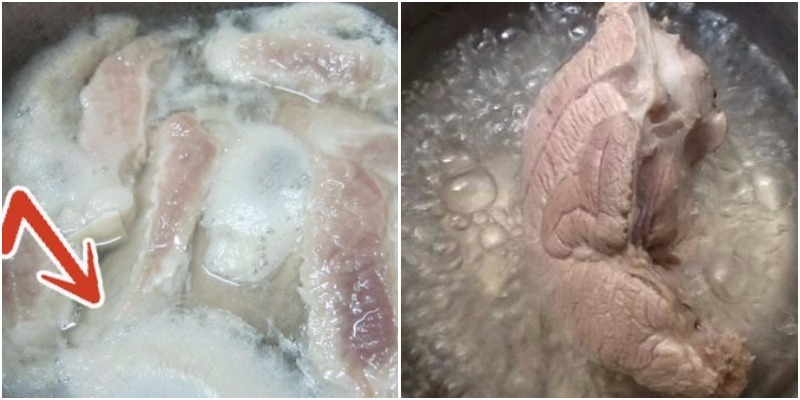
However, health experts warn that at temperatures between 200 and 300 degrees Celsius, amino acids, creatinine, sugars, and harmless compounds in the meat undergo chemical reactions, forming aromatic amino acids. These compounds contain up to 12 chemical substances, 9 of which are potential carcinogens.
According to statistics, while industrial pollution is responsible for 50% of cancer cases in modern life, dietary factors also play a significant role, accounting for 35% of cases.
Therefore, experts advise against overcooking meat. It is recommended to cook the meat just enough to make it tender. When the first layer of foam appears on the surface of the meat, it should be skimmed off to reduce the harmful effects of aromatic amino acids.
8. Poking and Turning the Meat Frequently
Poking the meat with a chopstick is a common method used to check if it is cooked. However, doing this too frequently can cause the meat to lose its moisture and become dry, affecting its taste and texture.
When boiling meat, wait for about 5 minutes after the water comes to a boil before poking it to check its doneness. If the meat is not ready, let it cook for another 5 minutes.
When frying or stewing, wait for one side of the meat to turn golden brown before flipping it over.

9. Adding Cold Water While Boiling Meat
It is a common mistake to add cold water to the pot when the water level drops during the boiling process. However, adding cold water or salt too early to a pot of boiling meat or bone broth can cause the proteins and fats to precipitate, making the meat tough and affecting its taste and nutritional value. To avoid this, it is recommended to use hot water if additional liquid is required during cooking.
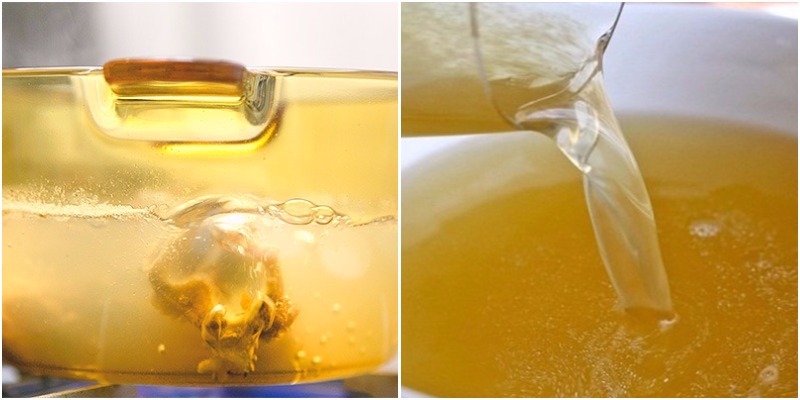
10. Cooking Too Much Meat at Once
To save time, many people tend to overcrowd the pan or pot with too much meat, even adding all the meat at once. This is a common mistake that should be avoided.
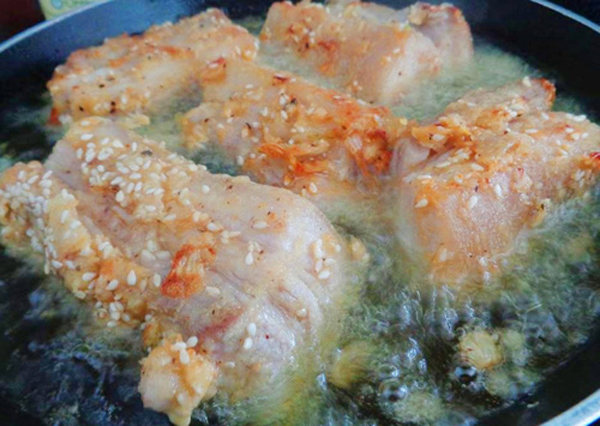
When too much meat is added, the temperature drops, and the meat does not cook evenly, resulting in uneven colors and textures. The best practice is to cook a moderate amount of meat at a time to allow for even heat distribution, proper seasoning, and consistent cooking.
In summary, cooking too much meat at once can lead to uneven heat distribution, resulting in discolored and less flavorful meat compared to cooking a moderate amount.
According to Giadinh.net
The Ultimate Guide to Cutting Board Care: Sun, Boil or Sterilize?
For moldy cutting boards, timely cleaning is essential to maintain hygiene. It is crucial to address the issue promptly to prevent the spread of mold and bacteria, which can be detrimental to your health. Effective cleaning methods include using a mild detergent or a mixture of vinegar and water, followed by thorough rinsing and drying. Regular maintenance and prompt action are key to keeping your cutting boards sanitary and safe for food preparation.
Mastering the Art of Chopping Board Care: A Guide to Longevity and Sanitation
Introducing the ultimate guide to cutting board care: unlock the secrets to maintaining and preserving your chopping boards, ensuring they remain pristine and durable. Discover the dos and don’ts of chopping board maintenance, and elevate your kitchen game with these expert tips and tricks. Learn how to care for your cutting boards like a pro and impress your guests with your culinary prowess.
The Ultimate Guide to Avoiding Meat Preparation Pitfalls
“Mistakes to Avoid When Cooking Meat: A Guide for Home Cooks”.
Many home cooks, especially those new to the kitchen, often make common mistakes when it comes to cooking meat. From adding cold water to a pot of boiling meat to defrosting meat with hot water, these mistakes can ruin a dish. This introduction aims to highlight these errors and provide a preview of the article, which will offer valuable insights to help readers avoid these pitfalls and elevate their meat-cooking game.













